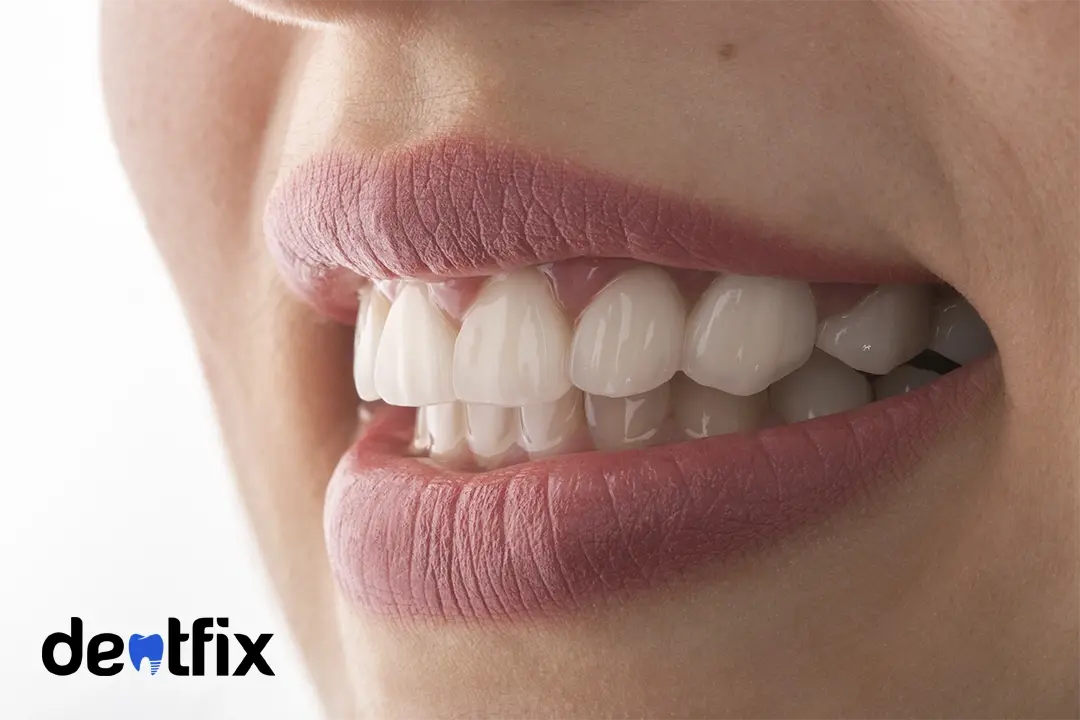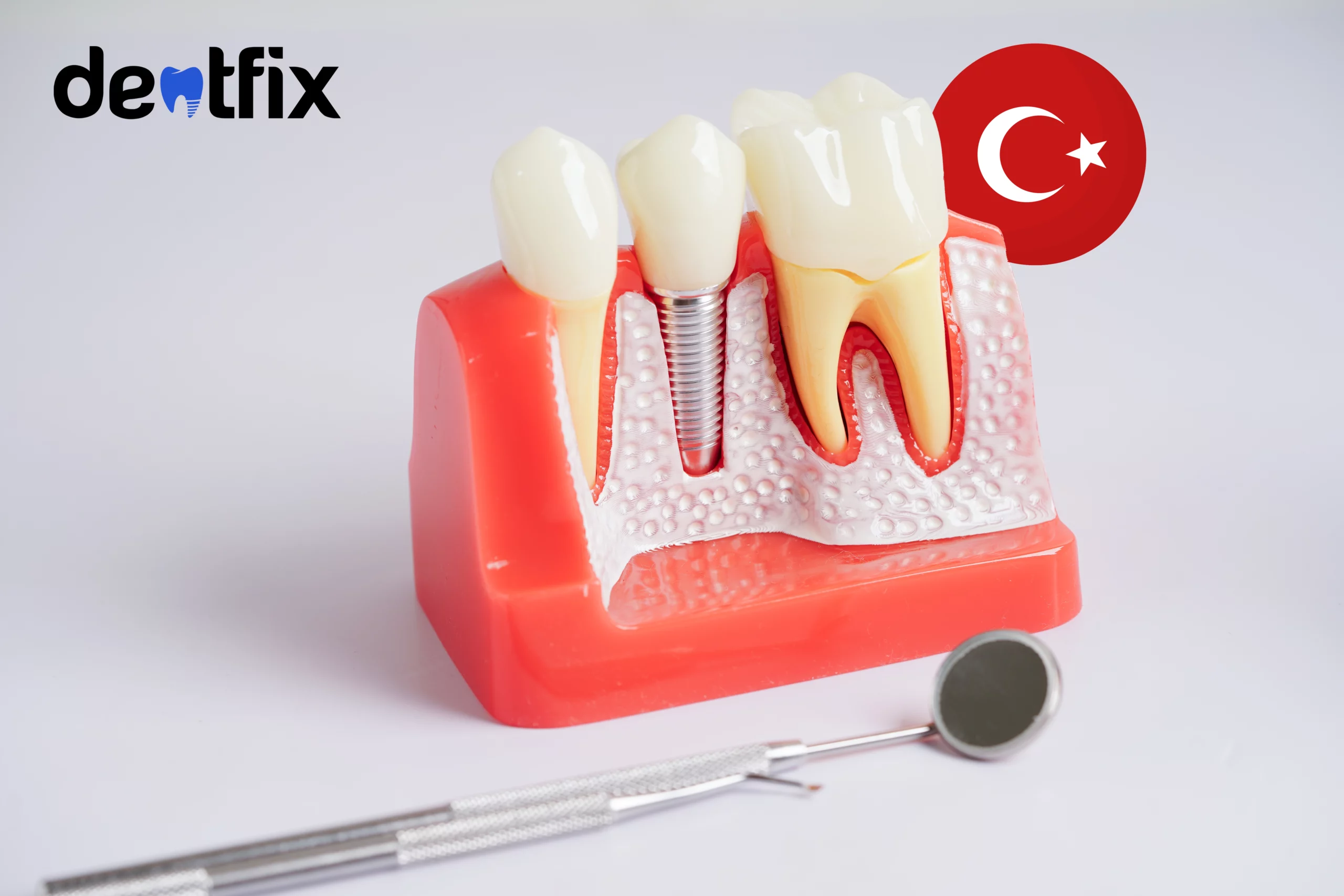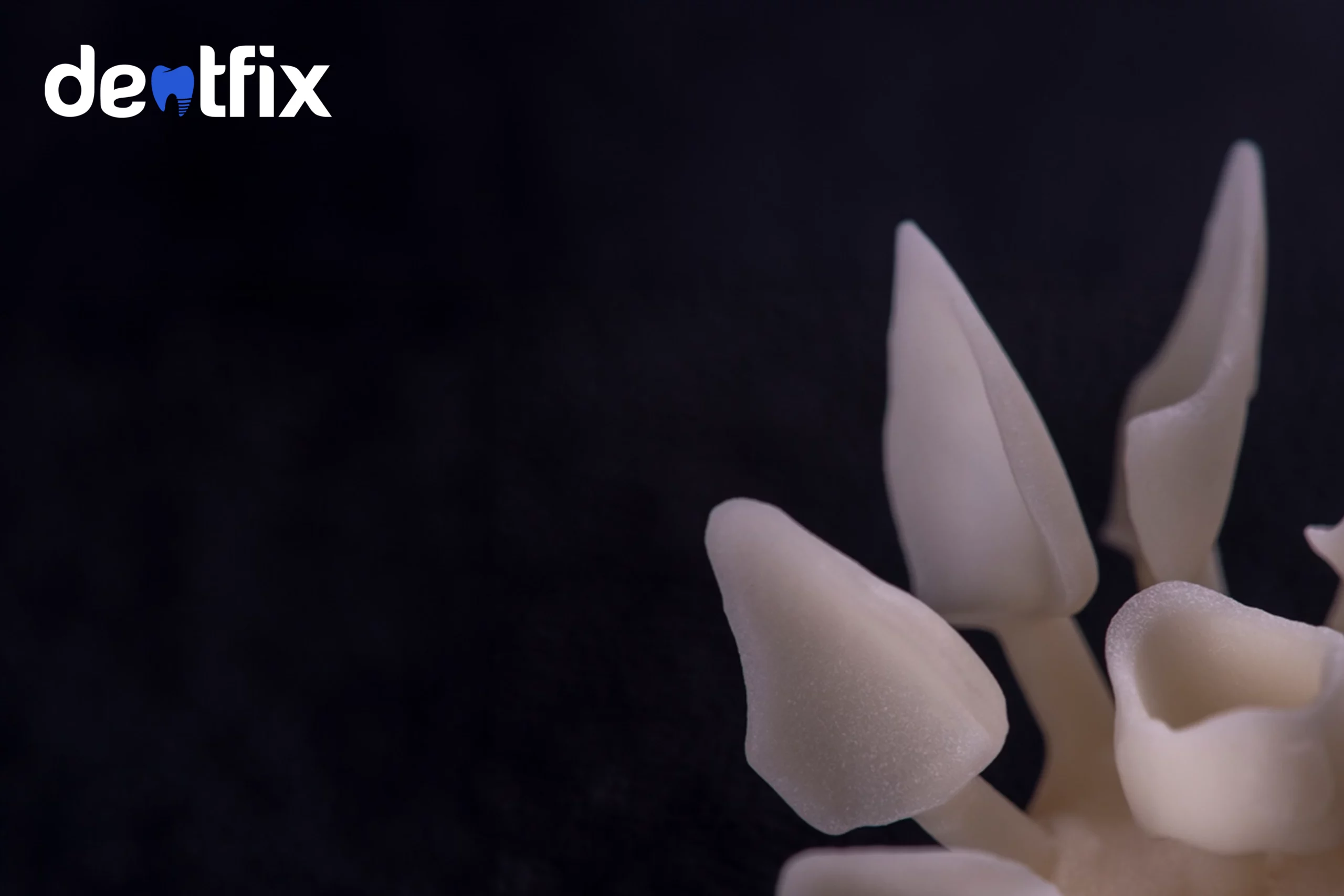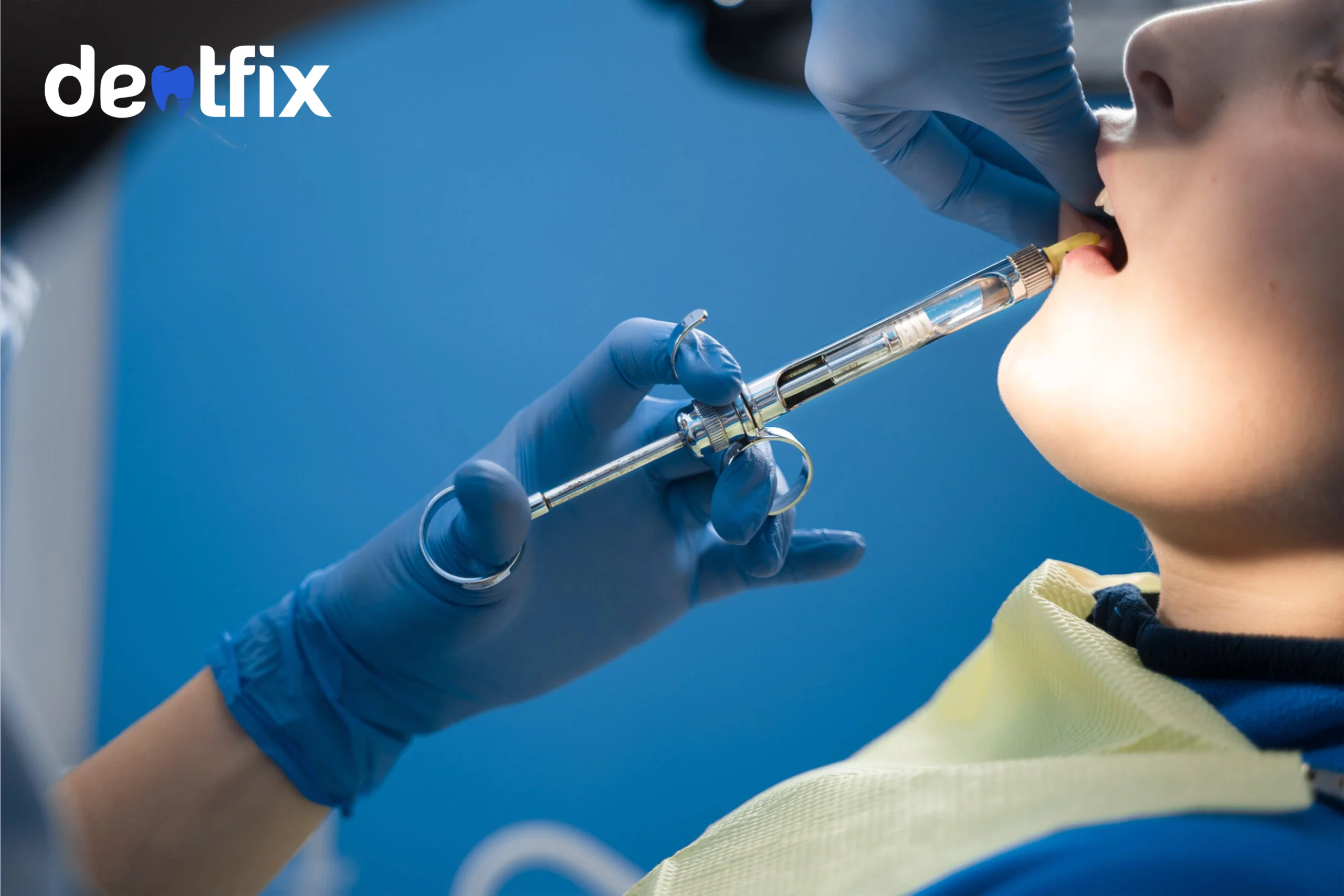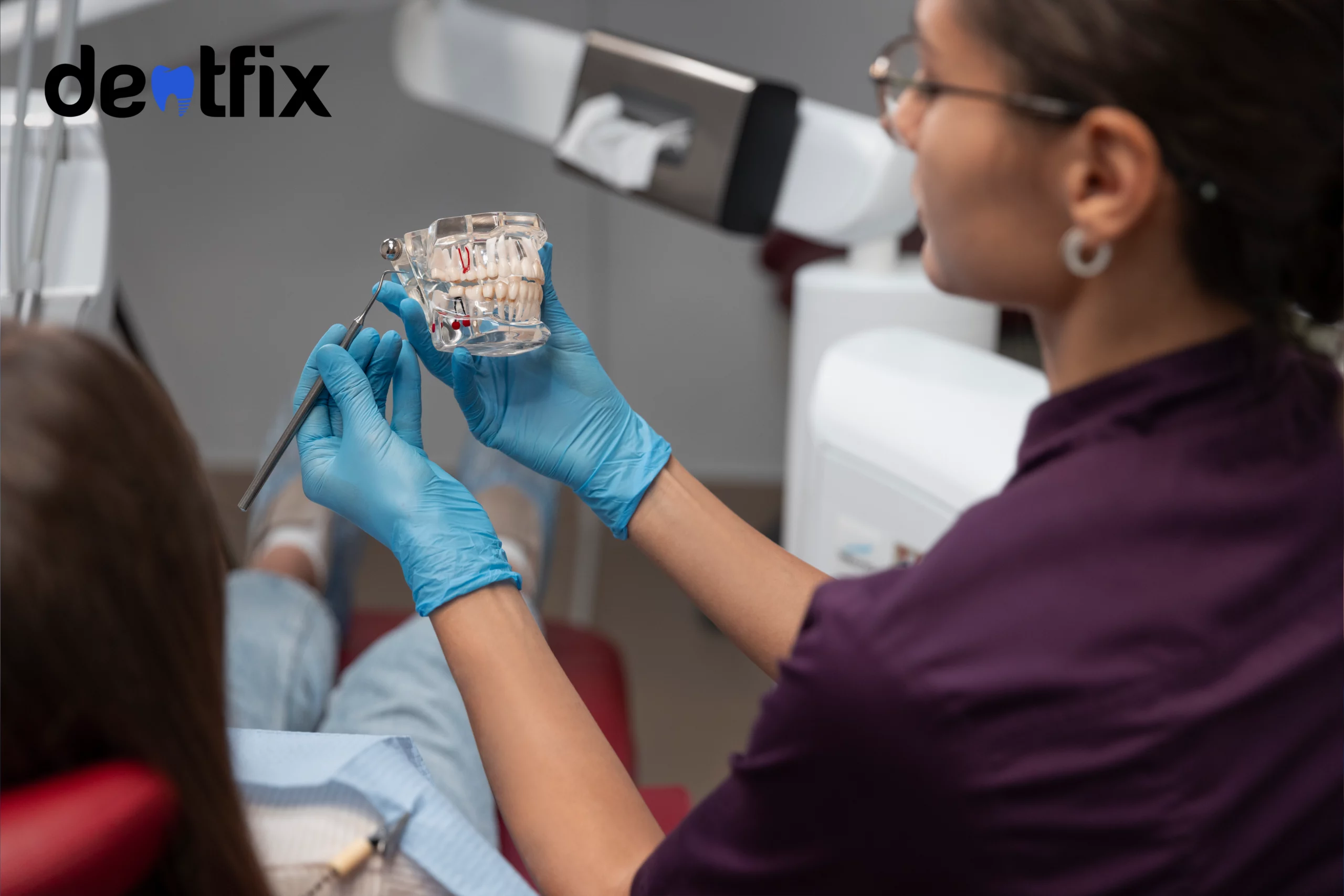Can you remove dental implants? How can you remove dental implants? What are some of the reasons for dental implant removal? Is it a lengthy process?
If you think you might need to remove your dental implants, you probably have a lot of questions. Dental implants are one of the most preferred procedures for replacing missing teeth. It provides a permanent and sturdy option for replacing your natural teeth. However, sometimes complications might arise after the oral surgery and you might experience certain symptoms. There might come a point where you need to remove or replace your dental implant.
In this article, you will learn everything you need to know about dental implant removal.
Can you remove dental implants? Here are the reasons!
First of all, you might wonder, can you even remove implants? You might have doubts since dental implants are permanent tooth replacement options. Dental implant removal is not a procedure that is preferred often, because dental implant surgery usually has a very high success rate. However, it is possible and necessary to remove the implant when you encounter certain situations.
We can identify several reasons it might be necessary to remove your dental implant.
Repositioning the implant
Sometimes an implant can be misaligned in your mouth/jawbone because of an error in initial placement. This will cause you to have an improper bite, which can be uncomfortable and may lead to various health problems. In order to fix the misalignment, you might need to get a revision implant surgery, which involves removing the implant and repositioning it to have proper alignment.
Dental implant movements
While the dental implants are integrating into your jawbone, you might experience slight movements of the implants. In the first three months after your implant surgery, the implant might not integrate into the bone if it lacks stability. In this case, you might experience soft tissue ingrowth.
Removal because of rejection of the implant
Implant failure can also happen if the patient’s body rejects the implant. Since it is a foreign object, the body can have certain reactions to it. Symptoms of implant rejection include intensifying pain at the implant site, fever, and chills. This can happen because of various reasons, one of them is medical conditions. These medical conditions can include:
- Celiac disease
- Metal allergies
- Cancer (neck and head cancer)
- Diabetes (type 1 & 2)
- Lupus
- Rheumatoid arthritis
Your dentist will usually conduct a detailed medical history to prevent such rejection from occurring. However, if you are not aware of these conditions previously, sometimes they only become clear after the procedure. In such cases, dental implant removal can resolve the symptoms of rejection and you should talk to your dentist about other alternatives to implants.
Implant failure because of infection
Implant failures can happen early or much later. Early implant failure happens when the implant does not attach to the jawbone properly. This can occur in the first months after the surgery. Late implant failure happens usually after the patient has had their implant for more than a year. Early or late implant failure can also occur because of an infection on the site on the implant surgery. The infection at the implant site is called peri-implantitis. Multiple research papers show that peri-implantitis is the number one reason why people need to remove their dental implants.
The infection attacks the gum tissue around the dental implant site and causes hard and soft tissue around the implant to have inflammation and swelling. Bacteria that is accumulated at the implant site causes this infection. Infection around the implant can be very painful and, if untreated, can cause bone loss. Some symptoms of infection at the implant site are:
- Bleeding of the gums,
- Inflammation
- Pus/discharge
- Pain
- Fever
- Bad breath
Loose implants needing to be removed
If you apply too much force to the implant (while chewing, biting, or grinding your teeth), it can become loose. It can also happen because of poorly placed implants or component failure.
Rarely, the crown of the dental implant also becomes loose and exposes the base of the implant. This can impact the integration of the implant to the jaw bone negatively and cause implant failure.
Removal because of sinus problems
If you experience chronic sinus problems, it can be because of dental implants. In order to get rid of these, you would need to remove the implant and replace it. If the dental implant surgery is on the upper jaw, sinus conditions and/or insufficient bone make the process much harder. Your dentist might recommend a sinus augmentation in such a case. This procedure involves lifting the bone into the sinus cavity. This makes space for the bone graft, which provides more bone to support the implant.
Removal because of damaged nerves
If your dentist places the implants too close to a nerve, it can cause nerve damage. Numbness or tingling in the tongue, lips, gums, or face are some signs of damage. This is a very painful situation, and you would need to seek professional help immediately.
Your dentist would remove the implant in that situation and replace it once the nerve damage heals.
Weak jawbone might be the reason
When your dentist places your implant on a weaker area of your jawbone during initial placement, it has a higher chance of failing. Similarly, if you do not have adequate bone to support the dental implant, it is likely to fail. Because it cannot integrate with the jaw properly without sufficient bone support.
Tobacco use
If you use tobacco products, you are more likely to experience dental implant failure. Smoking can trigger infections on the implant site, restrict the blood flow to the area and cause complications. Research shows that the failure rate of osseointegration for dental implants is much higher among smokers. The oral hygiene maintenance of the implants and the risk of peri-implantitis are also adversely affected by smoking.
But you can still get dental implants if you are a smoker. For more information, click here to see our article on smoking and dental implants.
Poor oral hygiene
Practicing a good oral hygiene routine is essential to keep your dental implants healthy. If you don’t take proper care of your oral health, poor oral hygiene can lead to infections which also cause bone loss. If you have a condition that affects your ability to move and prevents you from cleaning your teeth properly, you should not get dental implants.
Other medical conditions
If you have an underlying medical condition that affects bone strength and density, such as osteoporosis, osseointegration can be more difficult. You might experience a bone loss with this condition. Bones might become fragile and fracture. Healthy bone is immensely important for the survival rate of the implant. Other conditions might include certain auto-immune diseases like rheumatoid arthritis and diabetes. These conditions affect the recovery time of your body, which can affect a healthy osseointegration period.
Side effects of some medications
If you currently use certain medications for another condition, it might affect your dental implant’s success rate. For example, a research paper shows that heartburn medications can affect new bone growth negatively, which is essential for your implant. Another paper shows that people who take certain anti-depressants also experienced a similar situation.
How can you tell if your implant is failing?
The implant failure because of the reasons above will have certain common symptoms. We already touched on them a little bit while explaining the reasons behind dental implant failure. Some of these symptoms to watch out for are:
- Severe pain
- Gum inflammation
- Gum disease and inflammation
- Improper bite
- Difficulty in chewing
- Loose implants
- Allergic reactions
If you experience the symptoms mentioned above, make an appointment with your dentist promptly.
The dental removal procedure
The complexity of dental implant removal depends on how integrated the implant is into the jawbone. If the dental implant is not fully integrated into the jawbone, the dental implant removal procedure will be much simpler. There are several implant removal methods to remove a failed dental implant. Here, we will talk about the two most common ones.
Dental implant removal using a trough bur
The first technique that many dentists use in order to remove the dental implant is a device called trough bur (trephine bur). This method is the most common one for removing implants, and many dentists have used it over decades. The patient will be under anesthesia for the duration of this procedure.
In this method, the dentist will cut approximately 1 mm (or less) of bone tissue in order to loosen the implant. Then, they will look at the structure of the bone to see if they need to do any dental bone grafting to replace the bone. That way, you will be able to get a replacement implant after the healing process is over from dental implant removal.
Dental implant removal with an adapter
In this method, the dentist uses an ‘adapter’ that allows them to remove the implant without cutting any bone tissue. The adapter generates a high yield of toque which removes/loosens the implant from the bone. This method is much less invasive and many researchers recommend it for a less invasive removal procedure. The downside of the adapter method is that your dentist might not be able to use it for certain situations. Sometimes they would need to cut some of the bone tissue if the implant is integrated into the jaw bone. But if they can use it to remove your implant, you do not need to wait in order to replace your implant.
What is the best implant replacement option for you?
After the removal of your dental implant, you will need to replace it. You can replace your dental implant with another implant or dentures.
For the placement of your new implant, you might need to wait for a period of time after your dental implant removal surgery. You might need bone grafting after the removal procedure, which means that you will need to wait for up to 4 to 6 months after the procedure. Your dentist might prescribe mechanical cleaning or antibiotic treatment depending on any infection on the surgery site.
In some cases mentioned above, like removal using an adapter, you can get a new implant at the same time as the removal of the old implant. If the implant site is clean and without an infection, and if you have adequate bone in which your bone density is enough to hold a new implant, you can get your new implant right away.
Depending on the condition of your mouth and gums, your dentist might opt-out for other options, such as dentures, and bridges.
Dental bridges are prosthetic devices that fill gaps left from missing teeth. Some dental bridge types are:
- Resin-bonded bridges: These bridges have ‘wings’ on either side to affix with resin to the original teeth. They do not need to be ground down like a traditional bridge.
- Traditional bridges: These bridges are fixed and use existing teeth as a way of support for prosthetics.
- Cantilever bridges: The difference between cantilever bridges and traditional ones is that for cantilever bridges the bridge supports one side of the tooth.
- Partial denture: Partial dentures are removable replacements and are significantly cheaper than implants. For this procedure, replacements for missing teeth are attached to a plastic base that is gum colored. The feel of it reminds of a retainer tray.
What is the average cost of dental implant removal surgery?
The cost of the dental implant removal surgery depends on your condition; the reason for the removal, the expertise, the location of the dental clinic, or if you need any bone grafting, etc. It can go anywhere from 300 dollars to 1000 dollars.
The dental removal side effects
Usually, the dental implant removal procedure does not lead to any complications. The most common post-procedure complication patients experience is a certain level of pain and discomfort. In some other minor cases, bone loss or micro-cracks can happen in the jaw bone. Your dentist will best assess your specific condition before and after the procedure.
There is also a very small possibility of nerve damage and damage to the surrounding teeth. An experienced doctor will know how to avoid it.
Is dental implant removal painful?
During the procedure, you will be under local anesthesia. Since your dentist will sedate you, you will not experience any pain during the removal of the implant. Some pain and discomfort are common after the surgery, but they should not be excessive. If you experience too much pain, consult your dentist immediately.
How to take care of your mouth after dental implant removal
Taking care of your mouth after dental implant removal is something you would be familiar with. It is very similar to the aftercare of dental implant procedure. For detailed instructions, check out our article on aftercare. In short, avoid touching the implant site, avoid consuming cold drinks and food, stick to a soft food diet for a recommended time, etc. The recovery time after the procedure is approximately five days. It is normal to experience some level of pain and discomfort during this time. You may use any prescribed medication or over-the-counter pain medication to ease your pain. Your dentist might prescribe a course of antibiotics depending on your condition.
How can I minimize the risk of dental implant failure?
While you can do your best by following your dentist’s instructions and practicing good oral habits, you cannot exactly prevent dental implant failure. Some of the reasons we touched upon above are biological complications. You cannot control or prevent them from happening.
Conclusion
In this article, you have learned about some of the reasons why dental implants might fail, how to recognize the symptoms of those certain conditions, and the methods that are used in the removal process.
To sum it up, peri-implantitis is the most common reason for dental implant removal. Early and late failure of the implants can both happen because of infection. After consulting your dentist about your discomfort with your implant, you can choose a method for explantation if that’s what you need. The bur method is the more commonly used technique for dental implant removal, but doctors consider it to be a more invasive surgery. The adapter method (reverse torque) is the more conservative approach and uses more advanced technology that is becoming more common.
Consult with a dental professional to see if dental implant removal is the best option for you.
